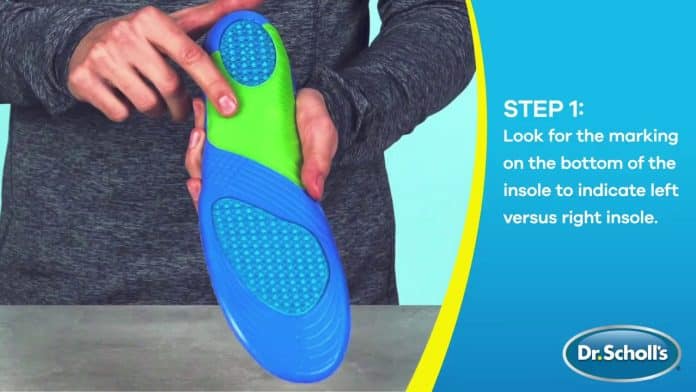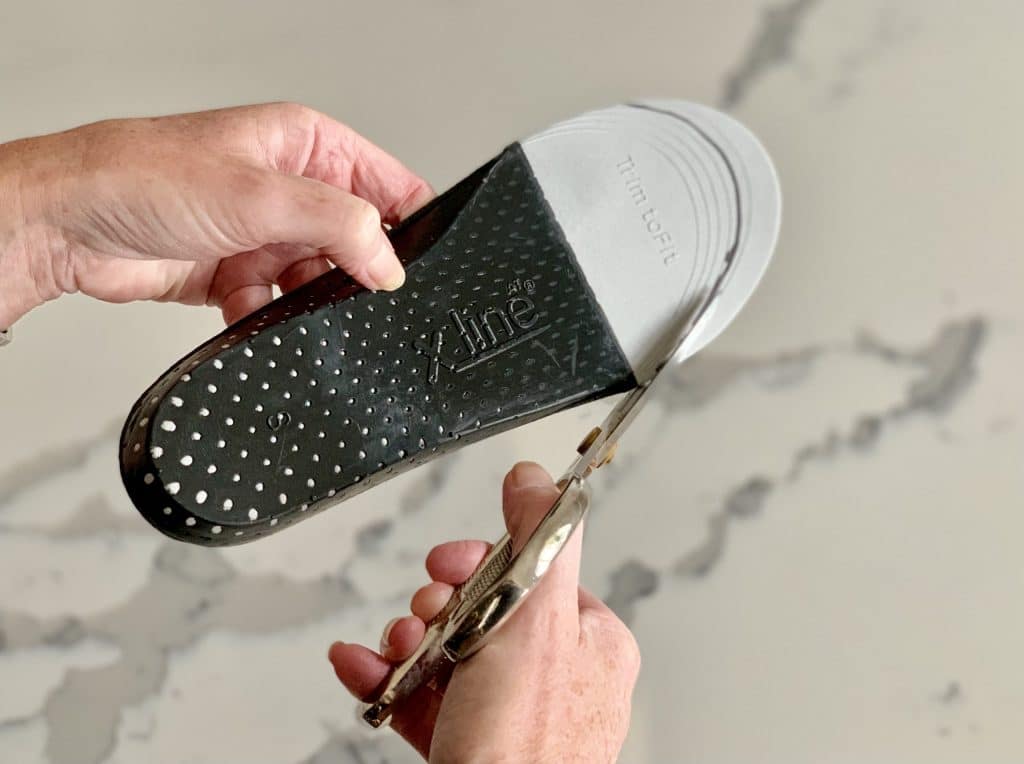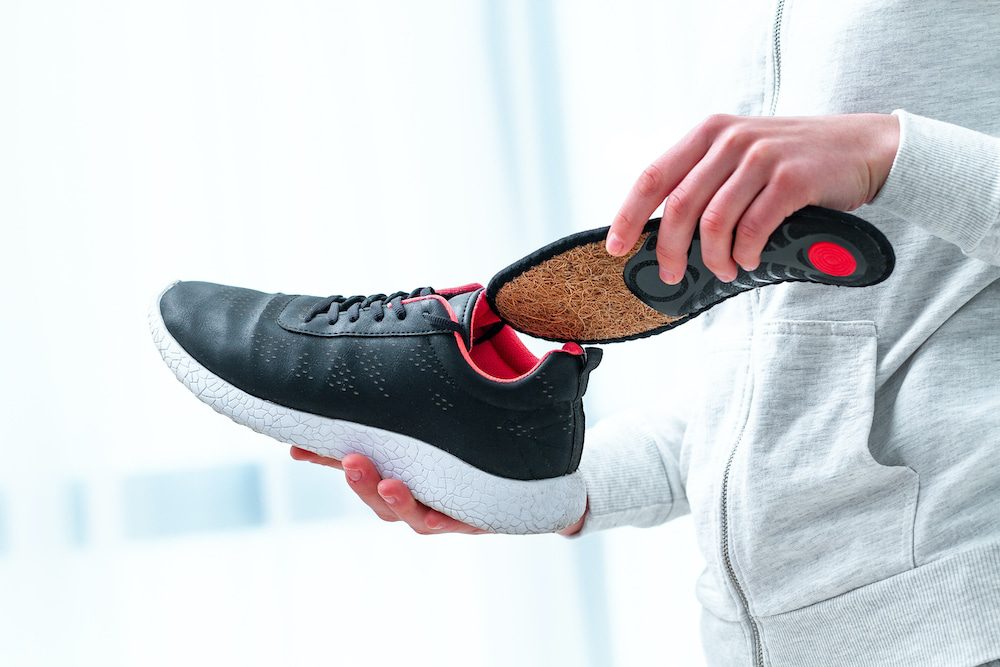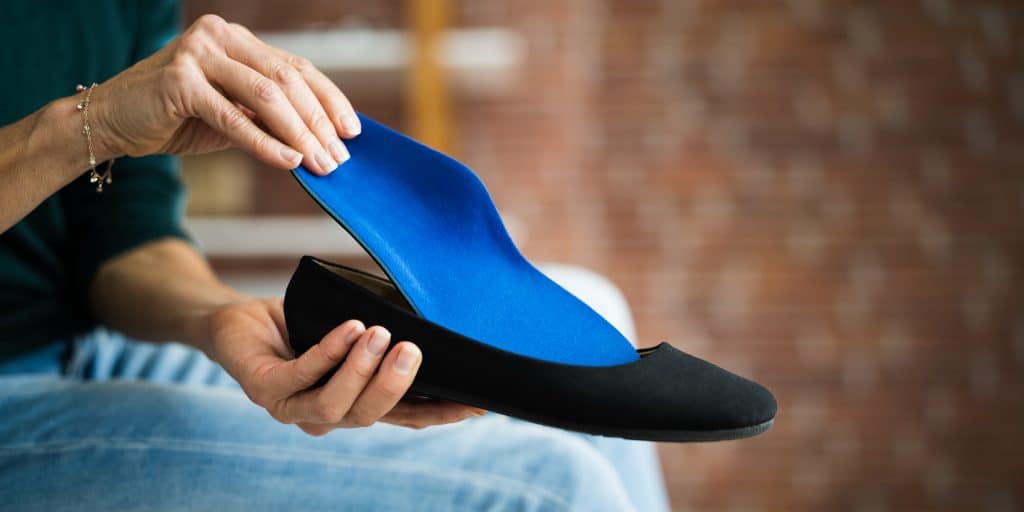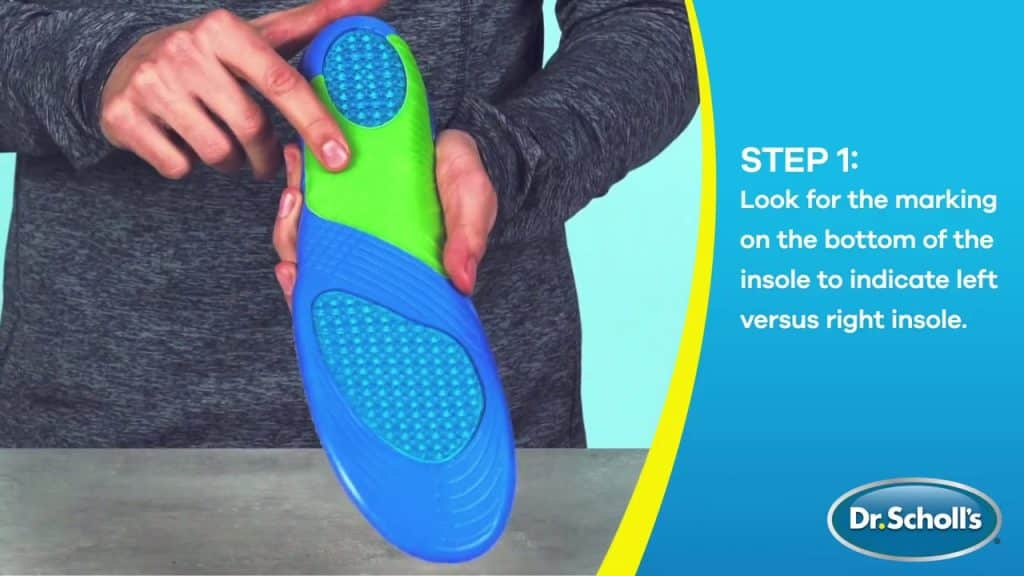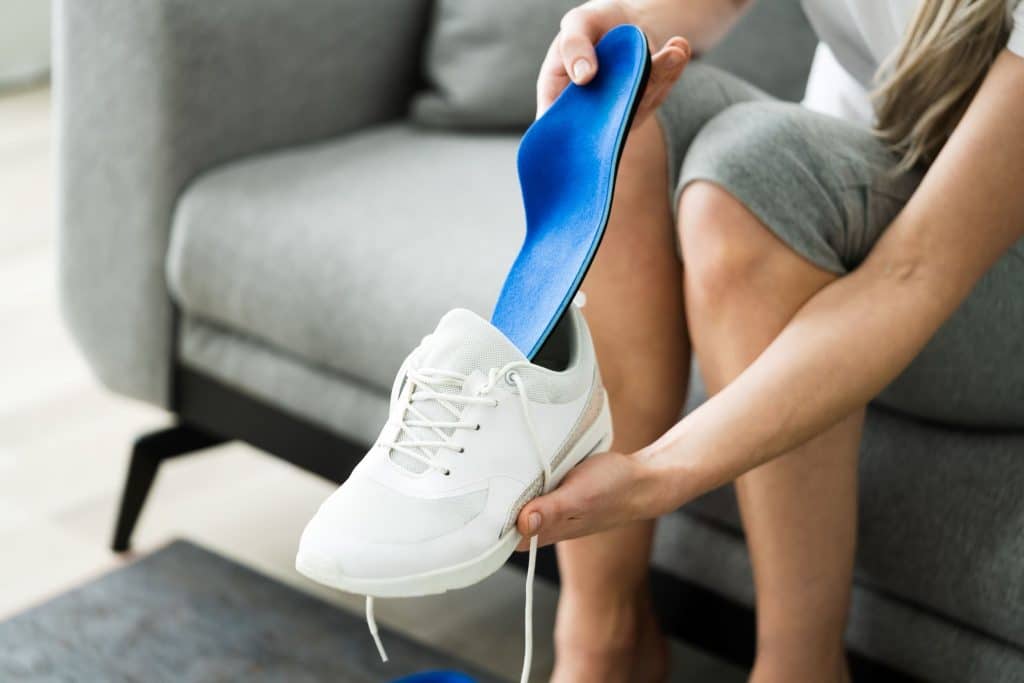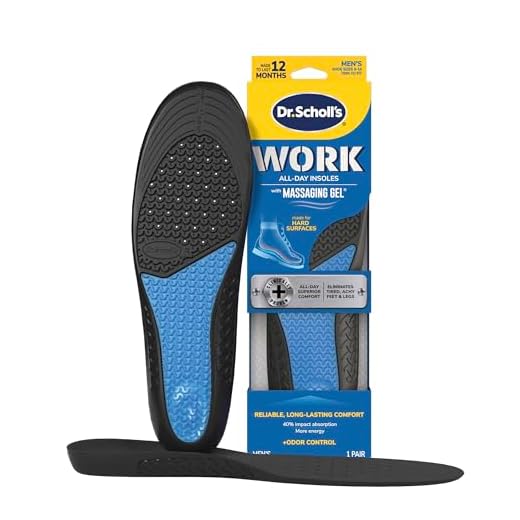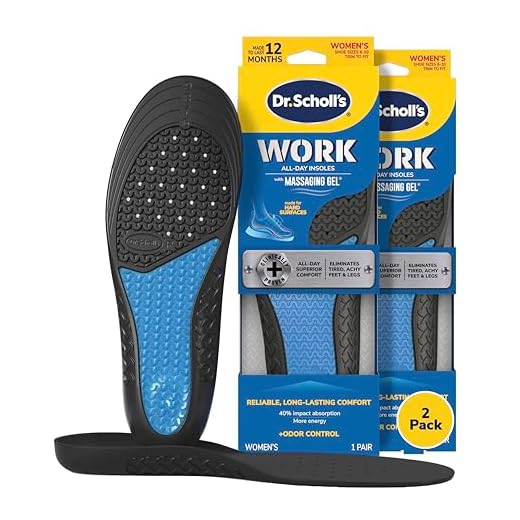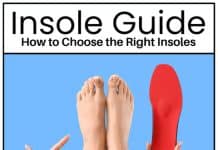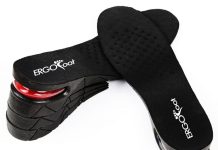Have you ever wondered about the benefits of using insoles in your shoes? Many people are curious about whether or not it is good to put insoles in shoes.
Insoles can provide numerous advantages such as improved comfort, support, and even alleviate certain foot conditions.
Whether you are an athlete, someone who spends long hours on their feet, or simply looking for extra cushioning, this article explores the potential benefits of using insoles in your everyday footwear.
Understanding Insoles
What are insoles?
Insoles, also known as shoe inserts or footbeds, are removable orthopedic devices that are placed inside shoes to provide additional support, cushioning, and comfort to the feet. They are designed to fit snugly inside the shoe, typically resting against the arch and heel area of the foot.
Different types of insoles
There are various types of insoles available in the market, each catering to specific foot conditions or activities. Some common types of insoles include:
- Arch support insoles: These provide extra support to the arch of the foot and are particularly beneficial for individuals with flat feet or fallen arches.
- Cushioning insoles: These insoles are made from soft materials like foam or gel, providing additional cushioning and shock absorption to the feet.
- Orthotic insoles: These are specially designed insoles that are customized to match the specific contours of an individual’s feet. They help in correcting foot alignment and providing targeted support.
- Sport-specific insoles: These insoles are designed for specific sports, such as running, basketball, or soccer. They offer enhanced support and shock absorption tailored to the demands of the particular activity.
- Heel inserts: These focus on providing cushioning and support specifically to the heel area, offering relief from conditions like plantar fasciitis or heel pain.
Common materials used in insoles
Insoles can be made from a variety of materials, each offering different benefits. Some commonly used materials include:
- Foam: Foam insoles provide cushioning and shock absorption, making them suitable for individuals seeking additional comfort.
- Gel: Gel insoles are known for their excellent shock-absorbing properties. They distribute pressure evenly across the foot, reducing the risk of foot fatigue and pain.
- EVA (ethylene-vinyl acetate): EVA insoles are lightweight, flexible, and durable. They provide both cushioning and support, making them suitable for various foot conditions.
- Memory foam: Memory foam insoles contour to the shape of the foot, providing personalized support and cushioning.
- Leather: Leather insoles offer natural breathability and moisture-wicking properties, making them suitable for individuals with sweaty feet.
- Polyurethane: Polyurethane insoles provide excellent shock absorption and durability, making them ideal for athletes or those involved in high-impact activities.
How do insoles work?
Insoles work by providing support and cushioning to the feet, which helps in improving comfort, relieving foot pain, and correcting foot alignment.
They can distribute pressure more evenly across the foot, reducing stress on specific areas. Insoles with arch support can help individuals with flat feet or high arches maintain the natural arch shape and alleviate related discomfort.
Additionally, insoles can absorb shock and impact, reducing the strain on joints and preventing injuries.
Depending on the specific condition or activity, insoles can be designed to provide targeted support, such as extra cushioning in the heel area for individuals with plantar fasciitis or metatarsal support for those with metatarsalgia.
Benefits of Using Insoles
Improved comfort and support
One of the primary benefits of using insoles is the enhanced comfort they provide. Insoles can add an extra layer of cushioning to the shoe, reducing pressure on sensitive areas of the foot and relieving discomfort. They also offer additional support to the arches and heels, promoting better foot alignment and reducing strain on the feet and lower limbs.
Enhanced shock absorption
Insoles with shock-absorbing properties can help mitigate the impact of walking or running on hard surfaces. By absorbing and dispersing shock, they can reduce the risk of stress fractures, shin splints, and other injuries caused by repetitive impact.
Reduced foot pain
Individuals suffering from foot pain, whether due to plantar fasciitis, flat feet, or general fatigue, can benefit from using insoles. The cushioning and support provided by insoles can alleviate pain and discomfort, allowing individuals to stay on their feet for longer periods without experiencing excessive fatigue or discomfort.
Correction of foot alignment
Insoles with arch support or customized orthotics can help correct foot alignment issues such as flat feet, high arches, or overpronation. By providing the necessary support to the arches or redistributing pressure, insoles can assist in maintaining proper foot alignment and reducing the risk of related injuries.
Prevention of foot conditions
Using insoles can serve as a preventive measure against various foot conditions. The added support and cushioning can help distribute pressure evenly, reducing the risk of developing conditions such as plantar fasciitis, metatarsalgia, or Morton’s neuroma.
Insoles can also help individuals with diabetes by providing additional support and reducing the risk of foot ulcers or other complications.
Considerations before Using Insoles
Consulting a healthcare professional
Before using insoles, especially if you have pre-existing foot conditions or chronic pain, it is advisable to consult a healthcare professional, such as a podiatrist or orthopedic specialist. They can evaluate your foot health, gait, and specific needs to recommend the most suitable type of insole for your condition.
Identifying specific foot issues
To ensure you select the right type of insole, it is important to identify any specific foot issues you may have. Are you experiencing pain in the arches, heels, or ball of the foot? Do you have flat feet, high arches, or problems with foot alignment?
By understanding your specific foot concerns, you can choose an insole that addresses those issues effectively.
Sensitivity or allergies to materials
Some individuals may have sensitivities or allergies to certain materials commonly used in insoles, such as latex or certain foams. It is important to consider any potential allergies or sensitivities before purchasing an insole to avoid any adverse reactions.
Choosing the right type of insole
With various types of insoles available, it is crucial to choose the right one for your specific needs. Consider factors such as the level of support required, the type of shoe you will be wearing the insoles with, and the activities you engage in. For example, if you are a runner, you may want to opt for sport-specific insoles designed for running.
When to Use Insoles
Foot pronation or supination
If you tend to overpronate (feet rolling inward excessively) or supinate (feet rolling outward excessively), using insoles with corrective arch support can be beneficial. These insoles help align the feet and reduce the risk of related injuries.
Flat feet or high arches
Individuals with flat feet or high arches often experience discomfort and pain due to the lack of proper support. Insoles designed specifically for these conditions can provide the necessary support and alleviate related symptoms.
Plantar fasciitis or heel pain
Insoles with extra cushioning in the heel area and arch support can help relieve pain caused by plantar fasciitis or heel spurs. These insoles provide shock absorption and reduce strain on the plantar fascia, promoting healing and reducing discomfort.
Morton’s neuroma
Morton’s neuroma is a condition characterized by thickening of the tissue around the nerves leading to the toes. Insoles with metatarsal support can help alleviate the pressure on the ball of the foot and reduce the pain and inflammation associated with this condition.
Metatarsalgia
Metatarsalgia is a condition characterized by pain and inflammation in the ball of the foot. Insoles with metatarsal cushions or pads can help distribute pressure evenly across the forefoot, reducing pain and discomfort.
Arthritis or joint pain
Individuals with arthritis or other joint-related conditions can benefit from using insoles that offer cushioning and support. These insoles can help reduce pain, enhance stability, and improve overall comfort.
Diabetic foot
Individuals with diabetes often experience foot-related complications due to nerve damage and poor circulation. Insoles designed for diabetic foot care provide extra cushioning, support, and protection, reducing the risk of ulcers and other complications.
Insoles for Different Activities
Running and athletic activities
When engaging in running or other athletic activities, using insoles specifically designed for sports can enhance performance and reduce the risk of injuries. These insoles often offer targeted support, shock absorption, and stability to meet the demands of high-impact activities.
Walking and everyday use
Insoles designed for everyday use are typically focused on providing general comfort and support. They offer cushioning and arch support suitable for daily activities such as walking or standing for prolonged periods.
Work-related activities
For individuals who spend long hours on their feet at work, using insoles can provide much-needed support and comfort. Insoles with extra cushioning and shock absorption can help reduce fatigue and alleviate foot and lower limb pain caused by work-related activities.
Sport-specific insoles
Different sports require different types of foot support. Sport-specific insoles are designed to address the specific demands of particular activities, such as basketball, soccer, or hiking. These insoles offer tailored support, stability, and shock absorption to enhance performance and reduce the risk of injuries associated with those sports.
The Importance of Proper Fit
Choosing the correct size
When selecting insoles, it is crucial to choose the correct size to ensure optimal fit and support. Insoles that are too large or small can cause discomfort and may not provide the intended benefits. Refer to the manufacturer’s sizing guide and consider trying on insoles before making a purchase.
Trimming and customization
Insoles often come in a range of sizes, and some may require trimming to achieve the desired fit. Follow the instructions provided by the manufacturer to trim the insoles accurately. Additionally, some insoles allow for customization, such as heat-molding to fit the unique contours of your feet.
Ensuring proper alignment with foot and shoe
When placing insoles inside your shoes, ensure they are aligned properly with the arch and heel area of your foot. Proper alignment is essential for maximizing the benefits of insoles and reducing the risk of discomfort or instability. If needed, adjust the positioning or consult a healthcare professional for guidance.
Tips for Using Insoles
Gradual adaptation period
When you start using insoles for the first time or transition to a new pair, it is important to allow your feet to gradually adapt. Begin by wearing the insoles for shorter durations, then gradually increase the amount of time you wear them. This allows your feet to adjust to the new support and minimizes the risk of discomfort.
Cleaning and maintenance
To maintain hygiene and extend the lifespan of your insoles, it is important to clean them regularly.
Follow the manufacturer’s instructions for cleaning and drying, as certain materials may require specific care. Pay attention to any signs of wear and tear and replace the insoles when necessary.
Replacing insoles regularly
Insoles experience wear and tear over time, especially with regular use. It is important to replace them periodically to ensure optimal support and cushioning. The exact lifespan of insoles depends on factors like the materials used and the frequency of use. However, a general guideline is to replace insoles every six to twelve months, or when they show signs of significant wear.
Using insoles with orthotic shoes
If you already wear orthotic shoes or have custom orthotics, consult with a healthcare professional to determine whether additional insoles are necessary. They can guide you on the best way to combine the use of insoles and orthotics for optimal support and comfort.
Combining with other foot care practices
Insoles can be a valuable component of overall foot care. Combining their use with other practices, such as foot exercises, stretching, and wearing proper footwear, can further enhance foot health and alleviate discomfort.
Potential Drawbacks of Insoles
Temporary discomfort during adjustment
While insoles are generally designed for comfort, some individuals may experience temporary discomfort or an adjustment period when first using them. This is normal as your feet adapt to the new support and alignment. Gradually increasing the duration of use can help minimize any initial discomfort.
Incompatibility with certain shoe types
Not all insoles are suitable for every type of shoe. Some insoles may be thicker or may not fit properly in certain shoe designs. It is important to consider the shoe type and the space available for insoles when making a purchase to ensure compatibility.
Dependency on insoles
Using insoles regularly can provide significant benefits, but it is important to strike a balance. Overreliance on insoles may result in weakened foot muscles and reduced natural support. It is advisable to periodically go without insoles to allow your feet to engage their muscles and maintain strength.
Allergic reactions or skin irritations
Individuals with allergies or sensitivities to certain materials may experience skin irritations or allergic reactions when using insoles. It is important to check the materials used in the insoles and avoid those that might trigger any adverse reactions.
Alternative Foot Support Options
Custom orthotics
For individuals with specific foot conditions or severe pain, custom orthotics may be recommended. These are specially designed inserts that are customized to match the individual’s foot shape and needs. Custom orthotics provide personalized support and can be particularly beneficial for complex foot issues.
Heel cups and inserts
Heel cups and inserts focus on providing cushioning and support specifically to the heel area. They are beneficial for individuals with heel pain, plantar fasciitis, or Achilles tendonitis. Heel cups and inserts can be used in conjunction with insoles for targeted relief.
Foot exercises and stretches
Strengthening exercises and stretches for the feet can complement the use of insoles and promote overall foot health. These exercises help improve foot strength, flexibility, and balance. Consulting a healthcare professional or physical therapist can provide guidance on suitable exercises for specific foot conditions.
Choosing proper footwear
Wearing well-fitting, supportive footwear is essential for maintaining good foot health. Shoes with appropriate arch support, cushioning, and stability can work hand-in-hand with insoles to provide optimal foot support. Consider choosing shoes that accommodate the use of insoles and provide adequate room for the feet.
Conclusion
Insoles can be highly beneficial for individuals seeking additional comfort, support, and relief from foot conditions. They offer improved comfort and support, enhanced shock absorption, and can help reduce foot pain.
Insoles can correct foot alignment, prevent foot conditions, and cater to various activities and specific foot issues. However, it is important to consider individual needs, consult healthcare professionals when necessary, and ensure proper fit and maintenance.
While insoles are a valuable tool in foot care, it is also essential to incorporate other practices such as foot exercises and stretches, proper footwear, and overall foot hygiene for optimal foot health.
Ultimately, individual experiences and preferences may vary, so it is important to find the insoles that work best for you.
Dr. Scholl's Work All-Day Superior Comfort Insoles with Massaging Gel®, On Feet All-day,Shock Absorbing, Arch Support, Odor Control,Trim Inserts to Fit Work Boots and Shoes, Women's Size 6-10, 1 Pair
$11.00 in stock
Work All-Day Superior Comfort Insoles (with) Massaging Gel, Women, 1 Pair, Trim To Fit
$11.00 in stock
Dr. Scholl's Heavy Duty Support Insole Orthotics, Big & Tall, 200lbs+, Wide Feet, Shock Absorbing, Arch Support, Distributes Pressure, Trim to Fit Inserts, Work Boots & Shoes, Men Size 8-14, 1 Pair
$12.70 in stock
Dr. Scholl's Work Insoles (Pack ) // All-Day Shock Absorption And Reinforced Arch Support That Fits In Work Boots And More (For Men's 8-14, Also Available For Women's 6-10) 1 Pair (Pack of 2)
$21.25 in stock
Dr. Scholl’s Energizing Comfort Everyday Insoles with Massaging Gel®, On Feet All-day, Shock Absorbing, Arch Support,Trim Inserts to Fit Shoes, Men's Size 8-14, 1 Pair
$11.02 in stock
Dr. Scholl's® Air-Pillo® with Memory Foam Insoles, Unisex (Men 7-12) (Women 5-10), 1 Pair, Trim to Fit Inserts
$7.98 in stock
Dr. Scholl’s Extra Support Insoles Superior Shock Absorption and Reinforced Arch Support for Big & Tall Men to Reduce Muscle Fatigue So You Can Stay on Your Feet Longer (for Men's 8-14)
$12.70 in stock
Superfeet All-Purpose Support High Arch Insoles (Green) - Trim-To-Fit Orthotic Shoe Inserts - Professional Grade - Men 7.5-9 / Women 8.5-10
$41.11 in stock
Plantar Fasciitis Feet Insoles Arch Supports Orthotics Inserts Relieve Flat Feet, High Arch, Foot Pain Mens 9-9 1/2 | Womens 11-11 1/2
$15.98 in stock

